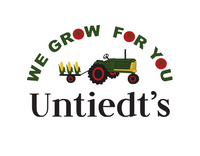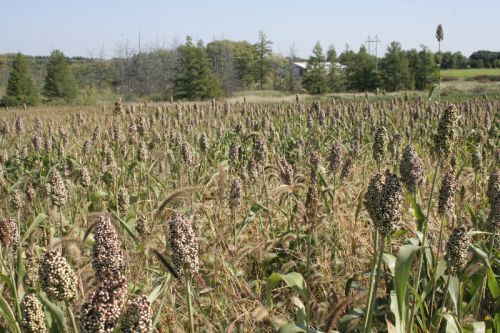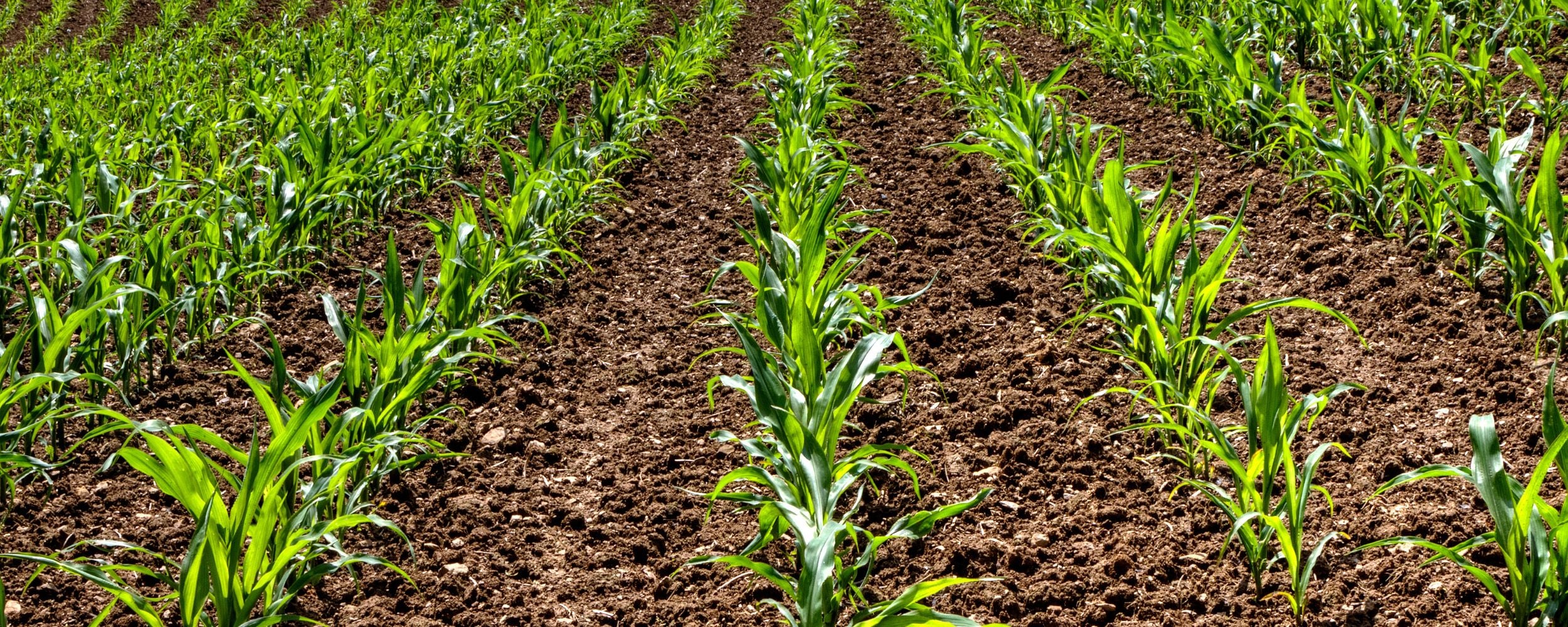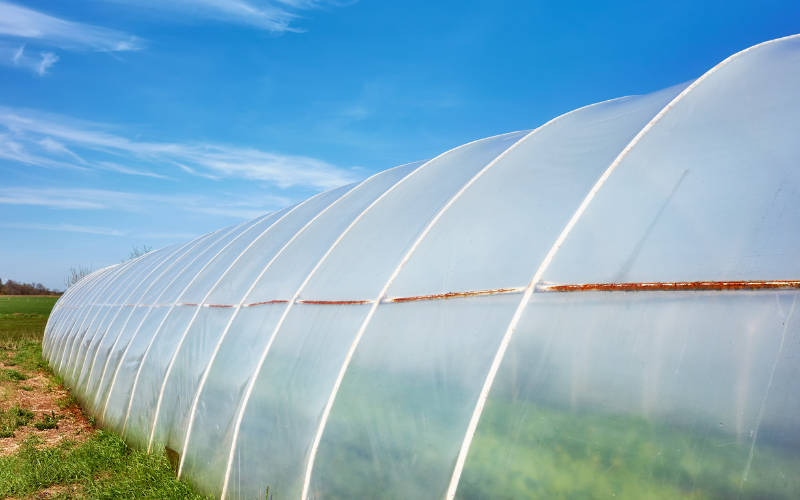Land stewardship can be practiced in many different ways, but the goal should be to always to make the Earth better than what it was when you arrived. To us, at Untiedt’s Vegetable Farm, it is an overall management philosophy that dictates how we farm. And, we will do anything within our control to maintain and enhance the sustainability of the resource, which is our land.
We know that the key to maintaining our livelihood is to be conscientious of the fragile eco-system that existed on this land before we got here. This means we classify areas to serve purposes other than to yield crops in order to support these species.
A Bee-friendly Habitat
For example, we set aside plots of land to grow only plants that attract bees. Sunflowers, golden rod, clover, alfalfa and sorghum, to name a few, are constantly blooming all season long. These areas help to draw in native bees to pollinate the plots, and they pollinate our field crops as well, but the point is to offer a place where the bees can return to without being bothered.
Contour Farming
Besides planting only grass on the hillsides we feel are too steep to farm, whenever possible, we plant across the hills instead of up and down. This is called contour farming.
Planting in this manner helps lessen erosion issues. We also keep a 60-foot span of wild grassland (filter strips) at the edge of any of our fields that are near to the Crow River to filter water runoff before it enters that water way.
Trees and Wetlands
When visiting the farm, one thing that is easy to notice is that most of our fields have trees placed 20-feet apart, some have even grown to over 75-feet tall, around its entire parameter to act as a wind break to keep soils from blowing away, but also to make sure trees are not sacrificed in exchange for farming.
We also cherish our wetlands, instead of drying them. In fact, we place predator-resistant Wood Duck houses around our wetlands. Houses for other bird species are also posted to encourage their habitation. Their presence is welcomed in hopes it will cut down on the amount of detrimental insects – and because we love to view them and hear their songs.
We devote whole sections of land for ground-nesting birds to nest in, leave a food patch for the wildlife in the winter, and to the best of our ability, we never harvest our dense cover areas before our wildlife friends have left the fields with their families.

Teaching the Community
At Untiedt’s Vegetable Farm, we want to teach the community about farming the sustainable way. We want to instill this knowledge we’ve collected over the last 40 years in to the minds of the next generation. Don’t be a taker – give back. If not, we all suffer. With one quick look into the Minnesota and Mississippi River basins and it’s apparent some people/companies do not share this same logic.
There are many intangibles out there that are important. We sincerely recommend reading the Sand County Almanac, a classic written by Aldo Leopold, first published in 1949, and never lost its purpose. Now it serves as a classic reference guide for those interested in reading about the effects on the delicate ecological balance of which we are all a part. Its focus is not on preservation, but on management. We all must try to do the greatest good, and leave the Earth in better condition than when we started.
It comes down to the question: What does it mean to you to see the birds return in the spring? To see the wild plum bloom?
Land stewardship is our personal religion; our long-term vision, and philosophy to live by. We whole-heartedly believe in “paying it forward” and that “we don’t inherit the land, we borrow it from our children.” This agrarian life we live can only be supported if we are one with our environment. Our practical and sustainable methods of farming allow us to achieve this unity.
It is no secret that we smile when the Monarchs find the milkweed, and the hummingbirds return to their feeders. Just follow our social media feeds and join us on the journey.



